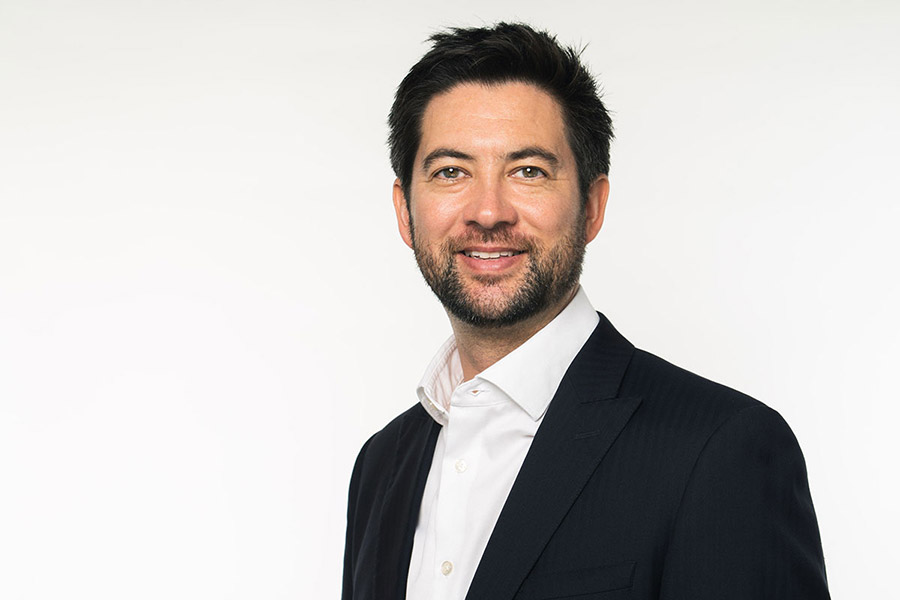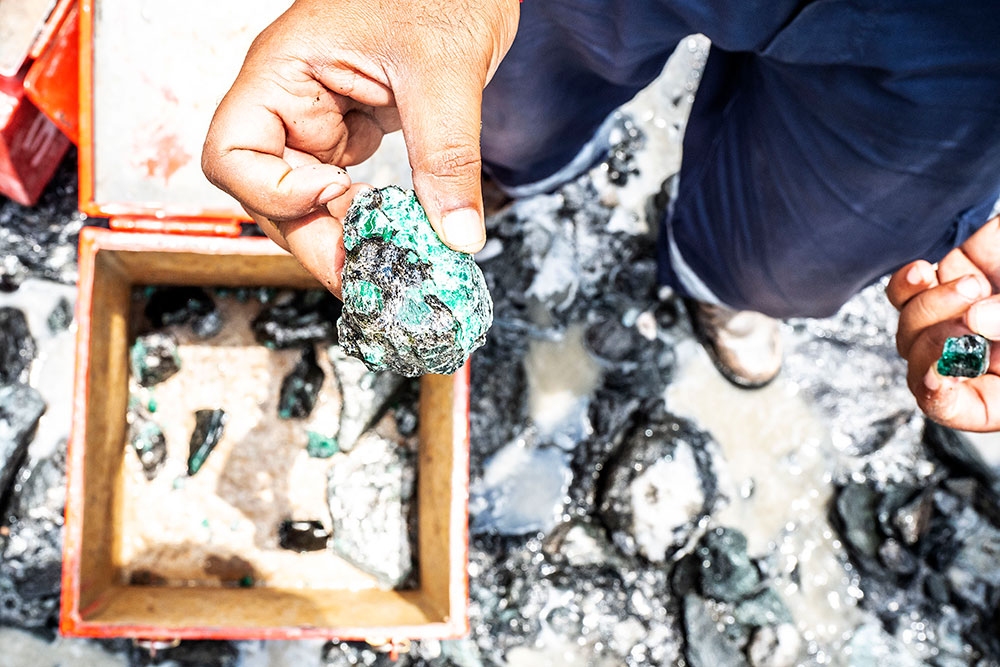Precious stones like diamonds, sapphires, rubies, and emeralds are some of the most coveted gems. Yet, these gems are not always sourced in an ethical manner. While there are organisations working together to raise awareness and promote responsible sourcing, there is still a long way to go. One of the leading names in the field of responsibly sourced gems, Gemfields has been at the forefront to spread awareness and also work with communities to develop projects that will help deliver long-term benefits.
Jack Cunningham, Sustainability, Policy & Risk Director at Gemfields talks to The Luxury Bulletin about responsible sourcing, sustainability, how consumers can be part of the change and much more.

How does responsible sourcing differ from traditional gem sourcing methods?
The gemstone trading and jewellery industry is ancient and therefore quite opaque, based on a system of valuing the gemstones which is very subjective and inconsistent. We’re trying to change this by being transparent to the market about the prices that are paid and the taxes generated from selling our gemstones via an auction platform. This auction platform is important for the jewellery brands who buy from our auction partners in order to close the gap of uncertainty in the supply chain and minimise this opaqueness. Those auction partners know they are getting a consistent supply of the same quality gemstones.
Like most mining companies, our operations have to adhere to the national regulations on mining – everything from the licensing, to safety, to environmental rehabilitation are governed by strict codes of conduct or laws. As a minimum we will comply and rectify any non-compliances we find. Beyond that, we aim to push towards international best practices. Traditional gemstone sourcing can come from unregulated or even illegal sites where safety and environmental damage can be serious issues.
We also strive to generate a positive effect wherever possible – such as benefitting communities, funding conservation efforts, gaining the highest possible value of the country’s resources and both repatriating this and paying taxation to benefit the nation.
Given there are very few commercially viable deposits of coloured gemstones, global scale responsible sourcing is a challenge because many sources come from artisanal or small-scale operations. However, there is no one-size fits all approach to responsible sourcing, and if such practices become the norm, artisanal or small-scale operations can start on a path of improvement and this can only benefit the supply chain.
When did Gemfields introduce responsible sourcing and what was the inspiration behind this?
Gemfields is a young company and we are always seeking to do things differently.
We believe that coloured gemstones should be mined and marketed by championing three key values: transparency, legitimacy and integrity.
We both lead with our own standards and initiatives through the downstream supply chain and work with brand and other industry partners to try to standardise strong, transparent practices across the sector.
We see ourselves as the custodian of our host nations’ resources and believe that it is our responsibility to optimise the prices Mozambican rubies and Zambian emeralds achieve, with proceeds fully repatriated to the host countries. We also recognised that to transform the sector there needed to be disruption and a greater focus on transparency. As a listed business we have to be completely open about our business and be accountable to that. This is highly unusual but we believe that to create transformational change, pursuing those three values mentioned is very important.
Where do Gemfields source coloured stones from? Which are different stones that Gemfields provides?
Gemfields is a world-leading supplier of responsibly sourced, coloured gemstones. We are proud to operate the world’s largest emerald mine in Zambia and the world’s largest ruby deposit in Mozambique. Eventually we would like to add a sapphire operation to the business.
It is our vision to be recognised as the global leader in producing African emeralds, rubies and sapphires, promoting transparency, trust and responsible mining practices.

How does Gemfields choose its partners – both mining and clients?
We sell our rough gemstones through private auctions where we invite the world’s leading companies in the manufacture and distribution of cut and polished gemstones. This pioneering auction platform allows transparent and fair trading of coloured gemstones, with the market setting prices and the vetted buyers given access to inspect the gems for themselves before placing their bids. Most importantly, the process provides full transparency to host countries’ governments, whose representatives attend and observe the entire auction process, viewing sales figures and calculating taxes due to host economies. Only by utilising this platform are we fulfilling our core value of offering complete transparency to host nations.
We are also a leading advocate for improvements to the wider coloured gemstone and jewellery sector. Whether working with international non-profits and industry associations or with brands in the Coloured Gemstones Working Group, we have been at the heart of actions to develop pioneering industry standards and initiatives.
These initiatives will provide open-access tools, educational materials and other resources made available to be used by the whole industry to improve supply-chain transparency and good practice.
How is Gemfields integrating responsible sourcing within Faberge?
Fabergé is a member of the Gemfields Group, and this relationship enables us to promote consumer awareness of responsibly sourced coloured gemstones, through the beauty of Fabergé’s designs and craftsmanship. In turn, Gemfields supports Fabergé in positioning itself as a responsible jewellery company.
One of our recent targets was to have Fabergé certified to Responsible Jewellery Council standards by Spring 2020, which we achieved in March.
At Gemfields we believe that raising awareness, demand and confidence via education and consumer-focused marketing is essential to ensure that responsibly sourced coloured gemstones (in particular Zambian emeralds and Mozambican rubies) are valued within the jewellery sector, and we do this by compiling research on consumer insights, participating in jewellery fairs and organising media and trade roundtables.
As a result of our marketing efforts, we are seeing both a growing consumer understanding of a gemstone’s origin and how gemstones can be responsibly mined to have a positive impact on the countries of source; and an increasing awareness that African gemstones are highly desirable and just as beautiful as the more established provenances such as Colombia and Myanmar.
Please tell us about Gemfields’ Conservation & Sustainability project.
Gemfields is realistic and open about the impact of mining on the environment and in our community relationships.
We back-fill our open-pit mines, collect seeds of indigenous plants and trees from the topsoil and create a seed bank for replanting vegetation in order to return the land to its original state at the earliest opportunity. We do not use chemicals that are hazardous to health, and we recycle the water used in our wash-plants.
We work collaboratively with communities to develop projects that will deliver long-term benefits and legacies for local people and address the issues that most commonly affect less economically developed countries.
We set aside funds specifically for the community and these projects are paid for in full by our operations and tailored to community needs. We build schools, provide health clinics and establish farming cooperatives, to empower and provide long-term sustainable incomes, in particular for local women. We are an Africa-focused mining company, and there is an undeniable connection between the rarity of our coloured gemstones and the great African wildlife. So, we are also proud to partner with local conservation organisations that are protecting Africa’s animals whilst working with communities to prevent illegal poaching.

How crucial is responsible sourcing in the precious and coloured stones universe?
Responsible sourcing is at the core of our business; and our goal is to operate in a way that contributes positively to national economies, takes a leading role in modernising the coloured gemstone sector and builds lasting livelihoods for the communities around our mines.
We believe that customers should be confident that their gemstone has actively benefitted the country and community from which it came, and we work hard to ensure that our gems meet these high standards of provenance.
With so many parts to a very complex and unregulated supply chain, there will always be some uncertainty within the coloured gemstone sector. But with several significant projects underway, such as integrated supply chains and technology such as blockchain or the Gübelin laboratory’s ‘Proof of Provenance’, I’m confident there will be less uncertainty in the industry over the coming years.
Across the industry – miners, brands, cutters and polishers, small jewellers, trade associations, government institutions and standards-setters – there’s a desire to agree what ‘good’ looks like for coloured gemstones and jewellery. With such complexity and diversity, a ‘one size fits all’ approach isn’t really going to be possible. There are, for instance, thousands of gemstones beyond rubies, emeralds and sapphires, but I foresee increasing consumer interest in where, how and by whom these gemstones are produced ready for jewellery.
After all, it’s in everyone’s interest to make the industry more transparent. Who wouldn’t want a system that means we can know exactly where our favourite piece of jewellery comes from and feel confident that our purchase brought benefit to those involved?
How can a consumer be more conscious when it comes to buying coloured stones?
Do your own research. There’s plenty of information about sustainable jewellery online.
All major jewellery brands have a dedicated team of gemmologists and quality control departments responsible for selecting gemstones before they are set in jewellery. Ask questions. Sustainability is an important topic in today’s market, so most brands will be able to provide information on their ethos and strategy extensively.
Gemfields partners with jewellery brands that have a similar approach to sustainability topics, so checking on Gemfields website will provide an overview of the brands that feature our gems in their jewellery lines.
Whichever gemstone you select, it is important to buy from a trusted source in order to have full confidence; both that it has been sourced responsibly and that it is of the quality described.
If it is a significant gemstone you are purchasing, then there must be transparency on treatments of any kind, so it must be accompanied by a certificate from a recognized, independent gemmological laboratory. Gemfields also partners with the Gübelin laboratory of Switzerland, whose Provenance Proof technologies, not only cite the gemstone’s place of origin, but also set up an encrypted record of a gemstone’s journey as it changes hands from mine to consumer, providing a next step towards the goal of full transparency.




